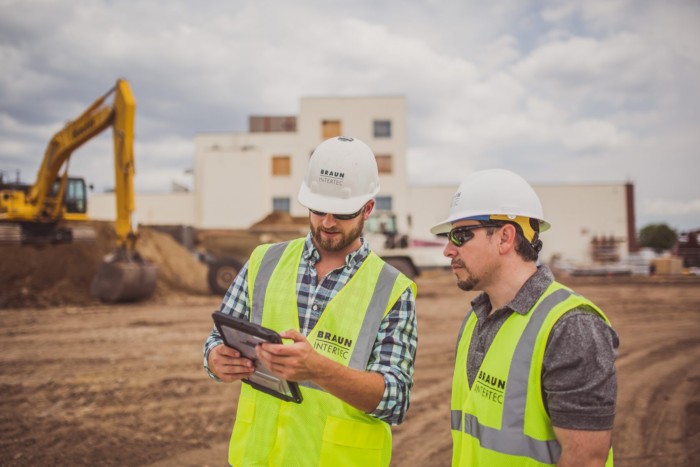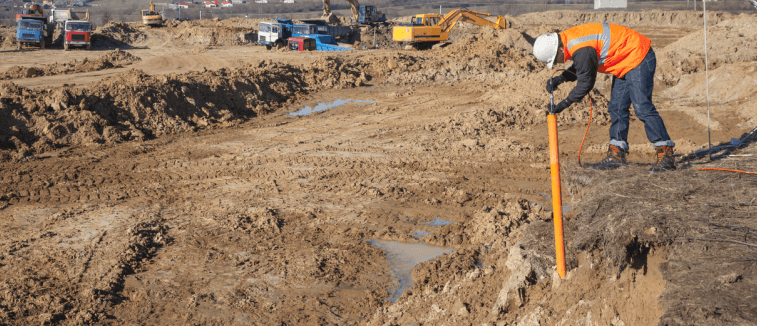Expert Consulting Engineer Solutions for Cutting-edge Framework Solutions
Wiki Article
The Importance of Dirt Evaluation and Site Examination in the Geotechnical Market: Ensuring Security and Security in Civil Engineering
In the geotechnical industry, dirt evaluation and site examination are foundational elements that underpin the safety and security and stability of civil design projects. These procedures not just expose the qualities of subsurface materials yet additionally notify important decisions relating to design and building methods. By completely comprehending dirt homes, engineers can preemptively address possible obstacles, ultimately protecting architectural integrity. The effects of these examinations expand past prompt task success; they can affect lasting sustainability and strength. As we explore the complexities of these methods, it ends up being apparent that their significance can not be overstated.Understanding Dirt Properties
In the realm of geotechnical design, a thorough understanding of dirt residential or commercial properties is vital for educated decision-making and effective task layout. The characterization of dirt entails the evaluation of numerous physical and mechanical residential or commercial properties, such as grain dimension distribution, plasticity, shear, cohesion, and leaks in the structure stamina. These buildings dictate how soil acts under different loading conditions and ecological influences, making them essential for examining website suitability for construction jobs.Soil category systems, such as the Unified Soil Classification System (USCS) and the AASHTO category, provide frameworks for organizing soils based on their qualities. This category help designers in anticipating actions under stress, water circulation, and negotiation, consequently affecting style choices and construction techniques.
In addition, the interaction in between dirt and bordering frameworks is a vital consideration in geotechnical design. Understanding soil properties helps identify possible difficulties, such as liquefaction in earthquake-prone locations or excessive negotiation in soft dirts. By extensively reviewing these buildings, geotechnical designers can guarantee the safety and security, stability, and longevity of structures, ultimately adding to the total strength of civil engineering projects.
Methods of Soil Analysis

In-situ examinations consist of strategies such as Standard Infiltration Tests (SPT), Cone Infiltration Tests (CPT), and vane shear examinations. SPT reviews the resistance of dirt to penetration, giving information on density and strength, while CPT determines soil resistance and pore pressure, producing constant profiles of dirt stratigraphy. Vane shear examinations are specifically useful for examining the shear strength of cohesive dirts.
Lab examinations complement these in-situ assessments and include tasting dirt for regulated screening. Usual laboratory techniques include Atterberg limitations, which determine the plasticity qualities of fine-grained dirts, and compaction tests, which evaluate moisture-density partnerships. Extra examinations, such as triaxial compression and unconfined compression examinations, are carried out to review the shear stamina of dirt examples under various conditions.
Duty of Site Investigation
Website investigation plays an essential function in the geotechnical design procedure, functioning as the foundation for understanding subsurface problems. This extensive evaluation involves methodical exploration of dirt and rock homes, groundwater levels, and various other geological attributes that affect task safety and security and security.Usually, website examinations incorporate a variety of techniques, including exploration boreholes, tasting, and in-situ screening. These approaches offer essential information on the physical and mechanical qualities of the ground, notifying designers about possible difficulties such as dirt negotiation, birthing capacity, and incline security.
Moreover, site investigation helps with the recognition of dangerous materials and contaminants, enabling the execution of appropriate removal measures. By establishing an accurate subsurface account, website examinations assist to alleviate dangers related to construction, making sure that tasks stick to security standards and guidelines.
The findings from a complete site investigation not only guide design decisions but additionally influence building methodologies and timelines. In recap, the value of website investigation can not be overemphasized; it is a vital step in the geotechnical design procedure, laying the groundwork for successful project execution while focusing on public safety and ecological stability.
Effect On Task Style
A detailed understanding of dirt attributes considerably influences project design in the geotechnical market. Dirt evaluation informs designers about the mechanical residential properties, composition, and behavior of the ground, which are important aspects in establishing the usefulness and safety and security of a construction project. Accurate data on dirt permeability, strength, and compressibility allow for the development of effective structure layouts, guaranteeing that structures are adequately sustained and secure throughout their lifespan.Moreover, the presence of impurities or unpredictable dirt layers can trigger alterations in project design, such as selecting alternative building and construction methods or materials. This proactive strategy lessens dangers connected to soil settlement, extreme loading, or side activity, thus protecting both the integrity of the consulting engineer framework and public security.
The integration of dirt analysis right into job design additionally promotes compliance with regulative requirements and environmental factors to consider. By addressing soil-related difficulties early in the style process, engineers can maximize resource allotment and reduce possible delays and prices connected with unexpected site problems. Inevitably, thorough soil evaluation improves the overall top quality and durability of civil design jobs, causing more resilient and sustainable framework.
Study and Examples
Demonstrating the important role of soil evaluation in the geotechnical sector, different situation research studies highlight its influence on task end results. One significant example is the construction of a skyscraper building in midtown Los Angeles, where extensive soil testing exposed unpredictable subsurface problems. consulting engineer. By recognizing the presence of expansive clay, engineers were able to revamp the structure, integrating deep pilings that made certain stability and security, inevitably protecting against possible architectural failings
Lastly, a dam task in the Southeast dealt with delays due to unanticipated soil disintegration concerns. In-depth soil analysis permitted engineers to execute efficient stablizing strategies, making sure that the dam satisfied safety regulations while sticking to the task timeline. These instances emphasize the requirement of detailed soil evaluation and website investigation, highlighting their vital duty in achieving secure and effective civil design tasks.
Conclusion
Finally, dirt evaluation and site investigation are essential parts of the geotechnical industry, playing a critical function in ensuring the security and stability of civil engineering jobs. By providing necessary information on soil residential or commercial properties and subsurface problems, these processes educate foundation layout and construction approaches. Additionally, detailed examinations contribute to danger identification and threat mitigation, ultimately enhancing the long life and toughness of frameworks while optimizing resource allowance throughout the task lifecycle.In the geotechnical sector, dirt evaluation and website examination are fundamental components that underpin the safety and stability of civil engineering projects. Understanding soil properties aids recognize possible obstacles, such as liquefaction in earthquake-prone locations or too much negotiation in soft soils. SPT assesses the resistance of soil to infiltration, giving data on density and toughness, while CPT gauges soil resistance and pore pressure, yielding constant profiles of dirt stratigraphy. These situations highlight the requirement of thorough dirt evaluation and website investigation, highlighting their important duty in achieving successful and secure civil design jobs.
In conclusion, dirt evaluation and site examination are essential elements of the geotechnical industry, playing a vital role in guaranteeing the safety and security of civil engineering jobs.
Report this wiki page